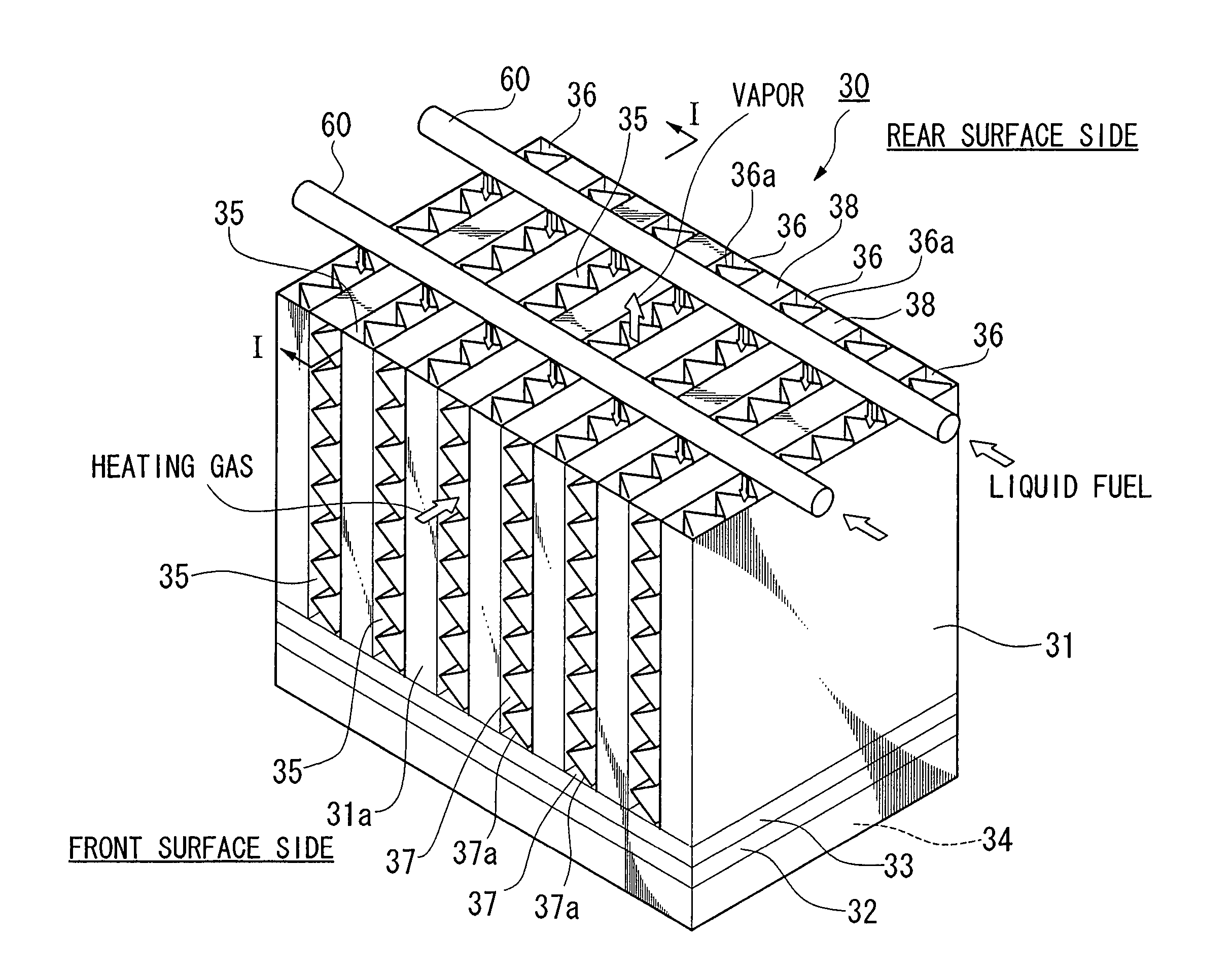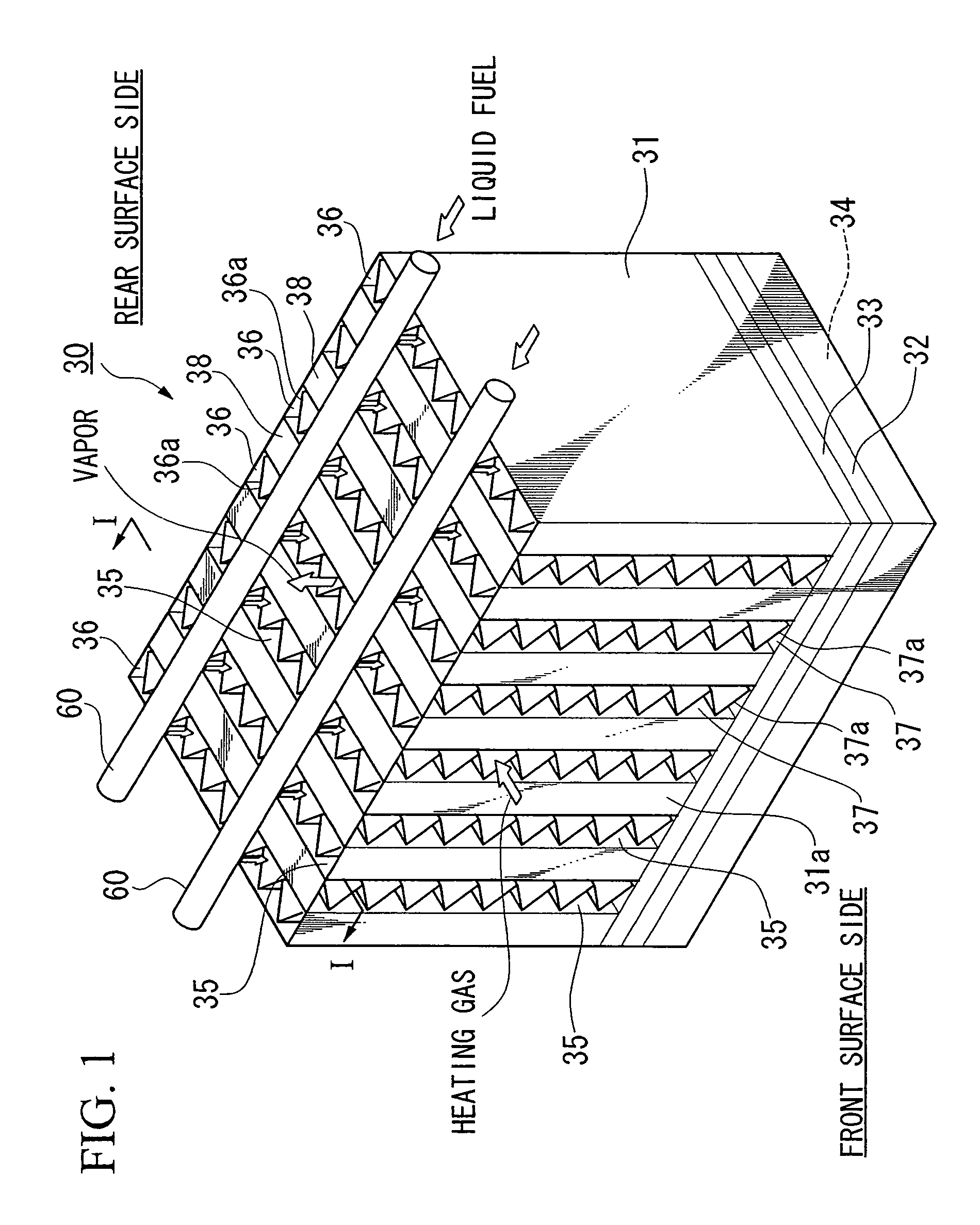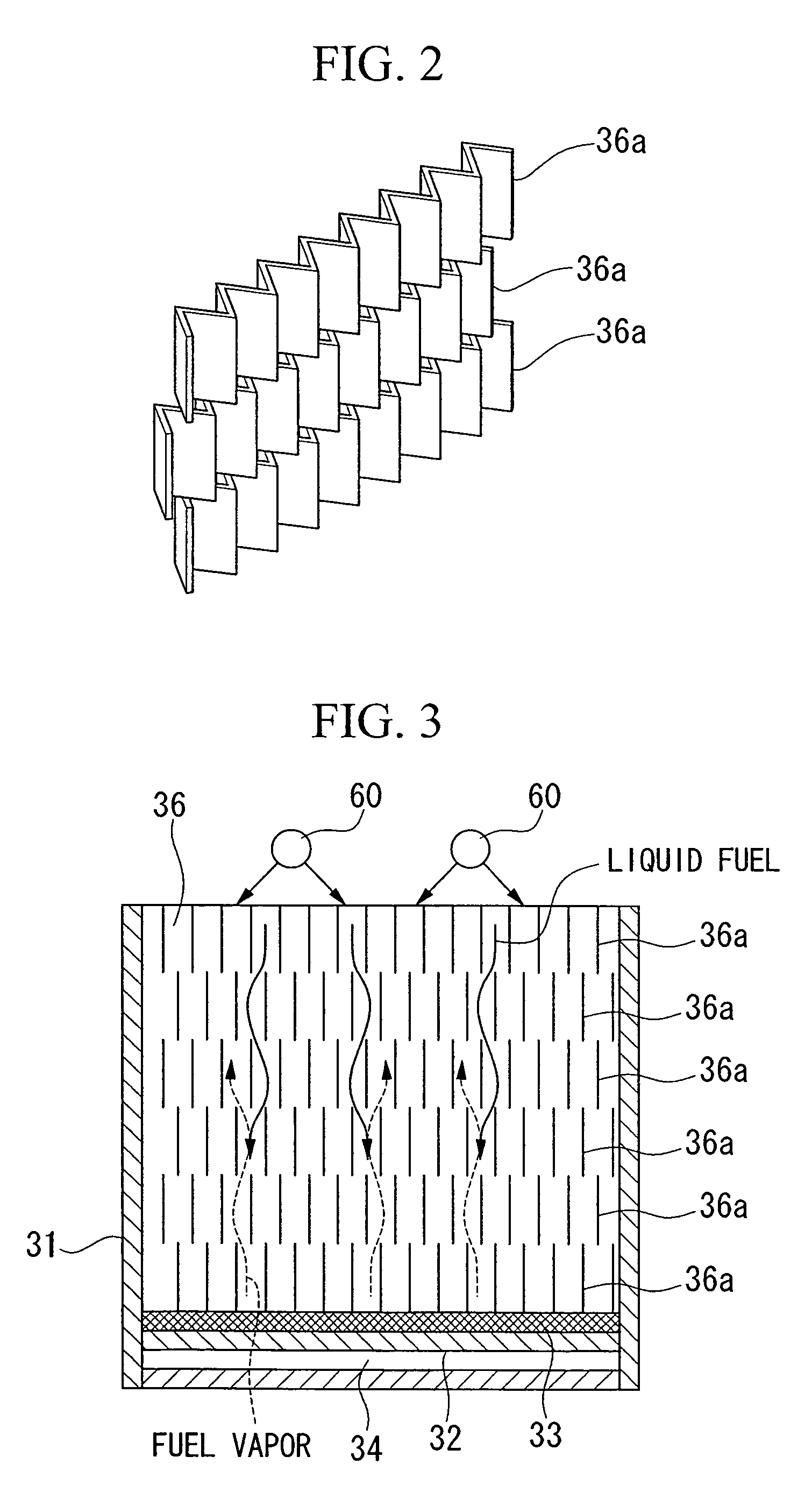Vaporizer that vaporizes a liquid to generate vapor
a technology of vaporizer and liquid fuel, which is applied in the field of vaporizer, can solve the problems of difficult to obtain satisfactory response, ineffective utilization of fuel vapor energy, and inability to effectively utilize energy possessed by fuel vapor, etc., and achieve excellent response, effective utilization of energy, and extremely efficient vaporization of liquid fuel
- Summary
- Abstract
- Description
- Claims
- Application Information
AI Technical Summary
Benefits of technology
Problems solved by technology
Method used
Image
Examples
first embodiment
[0062]Firstly, the first embodiment of the present invention will be described with reference made to FIG. 1 through FIG. 5.
[0063]FIG. 1 is a schematic structural view of a vaporizer 30. The vaporizer 30 is provided with a case 31 having the shape of a rectangular parallelepiped. A porous material 33 is mounted on the top side of a bottom plate (i.e., a bottom portion) 32 of the case 31, and a heating chamber (i.e., the heating apparatus) 34 is provided on the bottom side of the bottom plate 32.
[0064]The interior of the case 31 above the porous material 33 is divided into a large number of narrow width chambers that are formed in parallel with each other by partitioning walls 35, and these chambers are formed alternatingly as vaporization flow paths 36 and heating gas flow paths 37, with the outermost chamber in all cases being a vaporization flow path.
[0065]Each of the vaporization flow paths 36 is open only at the top, and bottom portions thereof are blocked by the bottom plate 32...
second embodiment
[0088]The second embodiment of the vaporizer 30 of the present invention will now be described with reference made to FIGS. 6 through 8. The vaporizer 30 of the second embodiment differs from that of the first embodiment in the following points.
[0089]In the vaporizer 30 of the first embodiment, the respective heating gas flow paths 37 are completely open on the front surface side and the rear surface side of the case 31, however, in the vaporizer 30 of the second embodiment, on the front surface side of the case 31, only the top portion and bottom portion of the respective heating gas flow paths are open, and on the rear surface side of the case 31, the entire surface of the respective heating gas flow paths 37 are blocked. Moreover, an aperture 37c that is provided on the bottom side of the front surface side of the case 31 forms a heating gas intake aperture, while an aperture 37d that is provided on the top side thereof forms a heating gas discharge aperture. Between the aperture...
third embodiment
[0094]Note that the present invention is not limited to the above described embodiments.
[0095]For example, the shape of the fins 36a provided inside the vaporization flow paths 36 is not limited to a substantially triangular waveform shape, and a variety of shapes, such as those shown in FIGS. 9A to 9E, can be employed. FIG. 9A is a fin having a rectangular waveform-shaped cross-section, FIG. 9B is what is known as a heliborne fin, FIG. 9C is a multi-hole plate fin, FIG. 9D is what is known as a cellate fin, and FIG. 9E is what is known as a louver fin.
[0096]In addition, in the above described embodiments, the fins 36a are provided in a plurality of steps in the direction of gravity inside the vaporization flow paths 36, and fins 36a in adjacent steps are placed offset to each other, however, the present invention is still achieved even if multiple layers of fins 36a are not provided or if the fins 36a are not offset.
[0097]It is also possible for the heating apparatus that is provid...
PUM
| Property | Measurement | Unit |
|---|---|---|
| hole diameter | aaaaa | aaaaa |
| temperature | aaaaa | aaaaa |
| movement | aaaaa | aaaaa |
Abstract
Description
Claims
Application Information
 Login to View More
Login to View More - R&D
- Intellectual Property
- Life Sciences
- Materials
- Tech Scout
- Unparalleled Data Quality
- Higher Quality Content
- 60% Fewer Hallucinations
Browse by: Latest US Patents, China's latest patents, Technical Efficacy Thesaurus, Application Domain, Technology Topic, Popular Technical Reports.
© 2025 PatSnap. All rights reserved.Legal|Privacy policy|Modern Slavery Act Transparency Statement|Sitemap|About US| Contact US: help@patsnap.com



